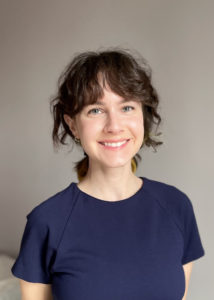Why do people share fake news?
There are certain contextual factors that may make us more susceptible to disinformation. Generally, it depends on one’s level of knowledge about the topic and their attitude toward it. The less someone knows and the more skeptical they are, the more likely they will be to spread fake news on a given subject.
In a 2022 study, we successfully reduced susceptibility to fake news. Using videos informed by behavioural science, we reduced people’s intent to share disinformation about sexual and reproductive health education (SRHE), increased their knowledge, and shifted their perceptions on the topic.
Disinformation campaigns in Peru
SRHE aims to promote equality between genders, prevent discrimination, and reduce the transmission of STDs and unwanted teenage pregnancies. SRHE has been shown to improve young people’s well-being long term and, in Peru, the majority of parents believe it should be provided in school. However, disinformation campaigns about SRHE have been increasingly shared on social media. They use a rhetoric of fear and moral panic to deceive Peruvians into thinking that it’s harmful. Common myths falsely claim that SRHE promotes homosexuality or promiscuity, undermines parental authority, and destroys the nuclear heterosexual family.
What we did
With our project partners—Wayka, Dr Melisa Basol, and the Old Dart Foundation—we developed and tested the impact of four 1-1.5 minute long videos designed to debunk myths about SRHE through a randomized controlled trial. Three of them featured intervention messages and one was a control video for comparison.
We recruited a sample of 4,007 Peruvian parents and teachers from across political viewpoints using Facebook and randomly assigned them to view one of the four videos. Then we showed them four fake news stimuli (in the format of WhatsApp messages) and asked them to report their likelihood of sharing the message with a contact or a group. We also asked questions measuring their knowledge and perceptions of SRHE.
How to refute fake news
In addition to featuring educators as trusted messengers, we used the “sandwich method” to structure the intervention videos:
- Fact. State the truth on the topic.
- Alert. Tell viewers that they might be targeted by fake news.
- Myth. Briefly state the myth.
- Explain why the myth is false. Give viewers an explanation of how they were deceived.
- Fact. Close with the truth on the topic.
This structure draws from the growing body of evidence on how behavioral science can address fake news. For example, it helps people spot disinformation by providing a quick, memorable explanation of a myth that they might be targeted with.
Results: The videos reduced the risk of fake news spreading
- The videos decreased the likelihood of people spreading fake news. Across all fake news stimuli, between 40% and 50% of participants reported a likelihood to share messages. Those exposed to the intervention videos were up to 9% less likely to do so than those in the control group.
- The videos increased support for SRHE. Exposure to any of the three short videos increased support for SRHE in schools by up to 18% compared to participants in the control group.
- Increased perceptions of peers’ support for SRHE. Although 76% of participants said that they support SRHE in schools to some extent, 50% had the incorrect notion that most Peruvian parents oppose it. As social creatures, our behavior is influenced by what we think others believe. Correcting this pluralistic ignorance (i.e., when people believe a minority view is the majority view) should help shift perceptions of common beliefs and reduce the spread of fake SRHE news.
- The videos helped people learn. 79% of participants who saw the intervention videos more accurately identified SRHE objectives and content. This increased knowledge should correspond with sharing less disinformation on the topic.
Given the success of the videos, our partner, Wakya, a nonprofit community newspaper, scaled them across their social media platforms to combat disinformation.
Let’s talk
Our research is a critical development in the fight against disinformation about SRHE. We think our findings hold promise for other topics plagued by fake news, such as climate change, democracy, and civic participation, among others. Nonprofits, NGOs, and other organizations could use and test this video structure to actively try to refute disinformation in their fields.
We are happy to help—if you’d like to discuss how behavioral insights can help spread the truth on your topic and make a positive social impact, get in touch with us here.
—-
We are grateful for the contributions of the Wayka team – Gabriela Modesto, Graciela Tiburcio, Nicol Leon, Luciana Távara, and Rael Mora – in developing and implementing study materials.








